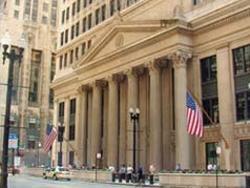No products in the cart.
Article
Fed Faces Interest Rate Conundrum
Fed Faces Interest Rate Conundrum
March 21, 2024, from Floor Focus FloorDaily News
New York, NY, March 21, 2024 – “The Federal Reserve is still aiming to lower interest rates later this year, and for many U.S. households and small businesses those rate cuts can’t come soon enough,” reports the Wall Street Journal. “But for big companies able to tap the corporate bond market, and for investors riding a rising stock market, relief from the Fed doesn’t seem all that necessary.
“The Fed on Wednesday left its federal-funds rate target steady at a range of 5.25% to 5.5%, the highest level in more than two decades. But it left in place plans to cut interest rates this year. Fed Chair Jerome Powell again characterized the level of rates as “restrictive,” and said that “it will likely be appropriate to begin dialing back policy restraint at some point this year.”
“Changes in the Fed’s benchmark fed-funds rate have a strong effect on a variety of short-term rates, such as those on bank deposits and money-market funds. But their influence on longer-term rates, such as those on corporate bonds, can be more tenuous.
“The idea that the Fed’s target rate is restrictive is driven by a variety of models, many of them versions of the Taylor rule put forth by the Stanford economist John Taylor. These calculate where the Fed should set rates based on its inflation target, current inflation, estimates of how much slack there is in the economy, and estimates of where rates will eventually need to settle. Three versions of the rule calculated by the Atlanta Fed suggest the Fed’s target rate should now be 3.9% to 4.7%.
“A lot of Americans probably don’t need to consult the Taylor rule to conclude rates are restrictive: They can just look at the interest their credit-card accounts are charging. The average interest rate on commercial bank credit-card plans in the fourth quarter was 21.5%, according to the Fed. That is the highest in the 30 years of available data, and compares with just 14.9% in the fourth quarter of 2019, right before the pandemic hit.
“Recent research from former U.S. Treasury Secretary Larry Summers and co-authors suggests that households’ high borrowing costs might even help explain what has been a bit of a mystery: Why, despite a strong job market and moderating inflation, consumer moods remain so dour.
“Small businesses, too, often tap credit cards, with a recent Fed survey finding that 56% of them regularly used cards for financing-more than any other source of credit. Lines of credit, also commonly used by small businesses, are also tied to short-term rates. Constraints on small businesses can translate into less robust job growth. Companies with fewer than 100 employees account for about a third of private employment, while research has shown that young, small businesses on the way to becoming larger ones are a deciding factor in U.S. job growth.
“But long-term interest rates aren’t nearly as elevated relative to before the pandemic as the overnight rate the Fed targets. The yield on the 10-year Treasury note has lately been at around 4.3%. While higher than before the pandemic, historically that isn’t very high-and it is significantly lower than the 5% it touched last fall.”

